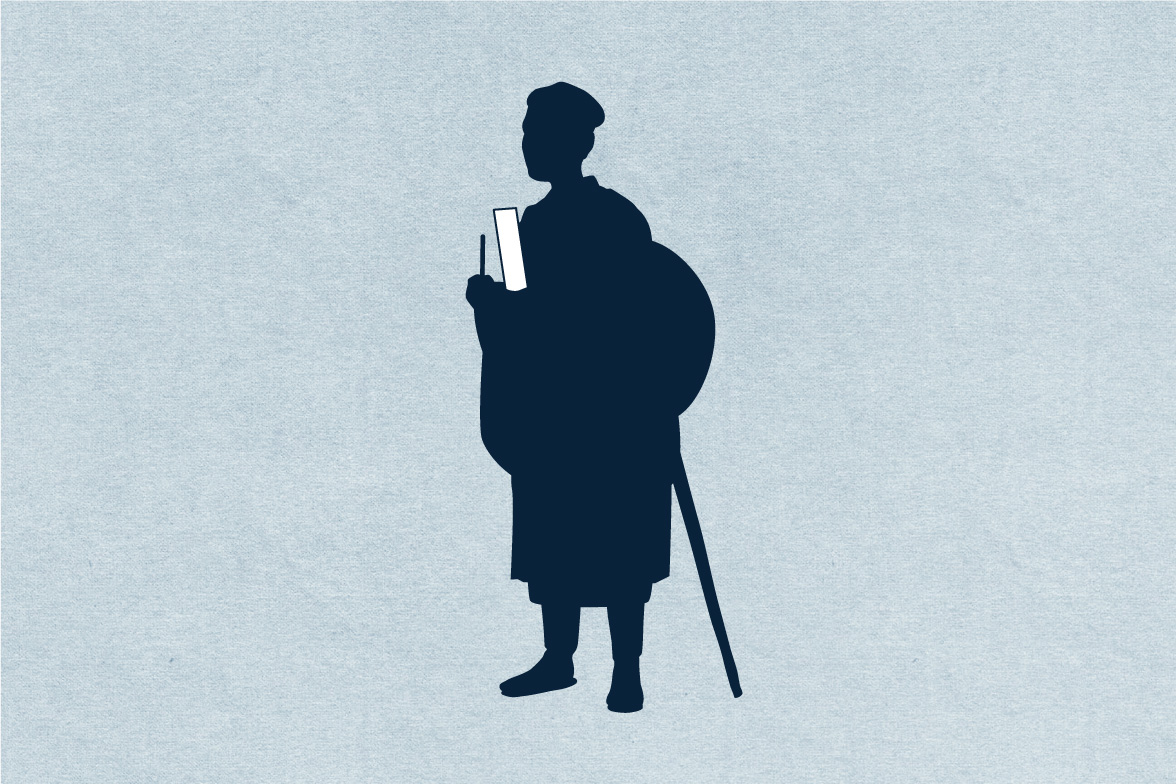Matsuo Basho (1644–1694)

Matsuo Basho was a haiku poet in the early Edo Period and is widely known as the greatest master of haiku.
He was born in 1644 in Ueno, Iga Province (now Ueno City, Mie Prefecture). He traveled around throughout his entire life and produced haiku literature masterpieces such as Oku no Hosomichi (The Narrow Road to the Deep North) and Sarashina Kiko (A Visit to Sarashina Village).
His connection to Otsu began in 1685. In the middle of his journey as written in Nozarashi Kiko, Basho stayed in Otsu. He took three disciples, Senna, Shohaku and Seia there. This was the beginning of the Konan Shomon, a group of Basho’s disciples. After that, Basho visited Otsu many times and produced a fine writing, Genjuan no ki (The Record of Genju Hermitage) and many haiku poems such as “Iku haru ya Omi no hito to oshimikeru” (I lament the end of spring like people in Omi do) and “Karasaki no matsu wa hana yori oboro nite” (Great pine trees of Karasaki look hazier than cherry blossoms at the back). He used the word “furusato” (home town) for Otsu in a letter to his disciple in Zeze. This shows how he loved Otsu. In 1694, he passed away in Osaka in the middle of his journey. In accordance with his will, he was buried at Gichuji Temple in Otsu. Basho’s grave and Okinado Hall in which Basho was enshrined are still in the precinct of Gichuji Temple.
- General admission
- Gichuji Temple (Gichu-ji), Remains of the Genju Hermitage (Genju-an), Otsu-e Paintings, etc.
